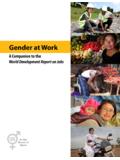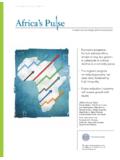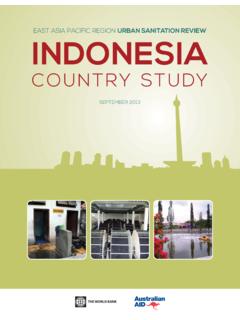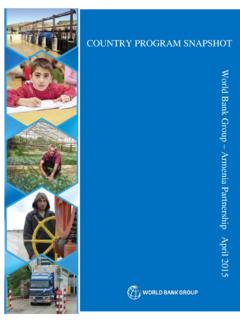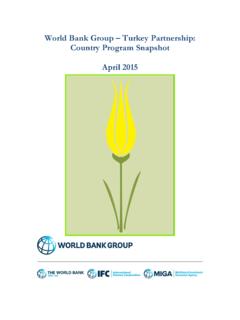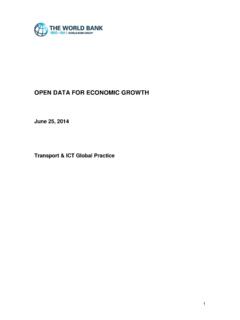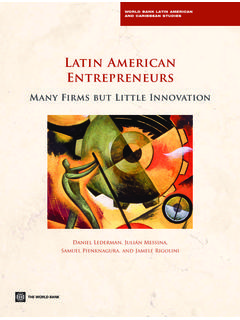Transcription of Time to shift gears - World Bank Group
1 time to shift gearsAccelerating growth and poverty reduction in the new KenyaTABLE OF CONTENTSABBREVIATIONS AND ACRONYMS iFOREWORD iiACKNOWLEDGEMENTS iiiMAIN MESSAGES AND KEY RECOMMENDATIONS ivEXECUTIVE SUMMARY vTHE STATE OF KENYA S ECONOMY 11.
2 Economic performance A resilient economy in times of adversity 2 Kenya s fiscal prudency is paying off Monetary conditions have eased but policy must keep an eye on inflation while 12 supporting growth The External Sector poses challenges and risks to Kenya s growth prospects 152. Growth Outlook for 2013-2014 Growth Prospects Risks to outlook Important priorities for the near and medium term 27 SPECIAL FOCUS: POVERTY 323.
3 Poverty Poverty in Kenya How has income-poverty changed? How have broader measures of welfare changed? 41 Making public spending work for the poor What will it take to make poverty history? Poverty reduction: the way forward 54 ANNEXESA nnex 1: Macroeconomic environment 58 Annex 2: GDP Growth Rates 2008-2012 Kenya SSA EAC 58 Annex 3: Kenya annual GDP 59 Annex 4: Quartely growth rates (percent) 60 Annex 5: Inflation 61 Annex 6: Tea production and exports 62 Annex 7: Coffee production and exports 63 Annex 8: Horticulture exports 64 Annex 9: Local electricity generation by source (Million KWh) 65 Annex 10.
4 Soft drinks and sugar production 66 Annex 11: Tourism arrivals 67 Annex 12: New vehicle registration 68 Annex 13: Exchange rate 69 Annex 14: Interest rates 70 Annex 15: Credit to private sector 71 Annex 16: Money aggregate 72 Annex 17: Mobile payments 73 Annex 18: Nairobi stock exchange (20 share index) and the dow jones (New York) 74 Annex 19: Nominal and real exchange rate 75 Annex 20: Fiscal position 76 Annex 21: 12-Months Cumulative Balance of Payments In millions of US dollars 77 Annex 22: Growth Outlook 79 Annex 23: Maize prices in Kenya 80 Annex 24: Methods 82 Annex 25: Illustrations of distributional impact of inequality on the distribution of consumption 84 Annex 26.
5 National accounts based predictions of poverty using $ dollar per day poverty line 85 Annex 27. Trends in household living standard indicators between 1989 & 2009 86 LIST OF FIGURESF igure 1: Kenya is lagging its peers vFigure 2: Has growth and inequality driven poverty down? viiFigure 3: Focusing on poor regions ..or poor people? viiiFigure : Growth picked up during the second half of 2012 2 Figure : Kenya is lagging behind SSA 3 Figure : Growth in 2012 was broad based 4 Figure : Hydro generation rebounded in 2012 4 Figure : Growth in services declined in all sectors including tourism except public administration 4 Figure : Consumption continues to be the key driver of Kenya s growth offsetting net 5 export weaknessFigure : Inflationary pressures have come under control 6 Figure : Fiscal position remains strong despite deterioration of the overall balance 6 Figure.
6 Kenya s public debt declined in 2012 7 Figure : Yield curve movements in the last 9 months reflected political developments 7 Figure : Principle sources of government revenue have remained the same over the years 8 Figure : Budget Cuts absorbed by recurrent spending while development spending was increased 9 Figure : Implementation of the budget remains a major challenge 9 Figure : Per capita allocation for counties shows wide variations 10 Figure : Monetary aggregates started increasing in response to policy easing in 12 the second half of 2012 Figure : Short term rates have responded to monetary policy which seems effective 12 Figure : Long term rates have remained high but are declining with monetary easing 13 Figure : Commercial banks pricing behavior of loans seems to vary across categories of borrowers 13 Figure : Commercial banks offered high deposit rates for term deposits to attract more liquidity 14 Figure : Tight monetary policy constrained credit to all sectors of the economy 14 Figure : Kenya s equities are recovering strongly 15 Figure : A wider current account deficit is being financed by short term flows 16 Figure : Non-oil imports mainly capital imports increased significantly in 2012 while 17 oil imports remained flat Figure.
7 FDI inflows into Kenya remains low compared to its peers in the region while 17 Short term flows have increased significantlyFigure : Short term flows has become a significant factor in the balance of payment 18 Figure : The exchange rate stabilized in 2012 but has depreciated at the rate of 1-4 percent 22 per year in nominal terms in the last 10 years against the major currenciesFigure : Kenya competitiveness continues to be eroded 22 Figure : Remittances have risen sharply in the last few years 23 Figure : A pickup in growth in 2013-14 24 Figure : Monetary policy space is available to support growth 25 Figure : A close relationship between inflation and credit to private sector 26 Figure : Savings and GNI per capita (2011) 28 Figure : Savings and investment, as at GDP (2011) 28 Figure : Kenya needs to ramp up poverty monitoring 32 Figure : The North and north-eastern, arid and semi-arid regions are the poorest regions in Kenya 35 Figure : The poor are concentrated where land is most fertile 36 Figure : Kenyans associate poverty with lack of food and money 37 Figure : Kenya s welfare indicators in an international perspective 38 Figure : A decade of poverty reduction in Sub-Saharan Africa 40 Figure.
8 The Gini-coefficient in Kenya and the region 41 Figure : Did strong growth drive poverty rates down? Depends how you think inequality 42 has changedFigure : More evidence that poverty has declined 43 Figure : The evolution of household characteristics 44 Figure : The geographic distribution of hardship in Kenya 46 Figure : Getting services can be difficult, especially for the poorest 48 Figure : Nilihonga ( I paid a bribe in Swahili) 48 Figure : Poor facilities and overcrowding are the most common problems associated with schools 49 Figure : Teacher absenteeism: At school but not teaching 49 Figure : Long waits and lack of medicines are the most common problems associated 50 with health facilitiesFigure.
9 Reaching the first Millennium Development Goal is unlikely 52 Figure : What Will it Take for Kenya to Reduce Extreme Poverty to 3 Percent by 2030? 53 Figure : Pillars of Social Protection in Kenya 54 LIST OF TABLEST able 1: Kenya: A country of contrasts in service delivery ixTable : Kenya s revenue mobilization fully catering for its recurrent expenditure and 8 part of developmentTable : Kenya s top exports and imports by broad functional category 19 Table : Selected Kenya s Trading Partners 20 Table : Macroeconomic Indicators 2008-2014 24 Table : Looking back - patterns of poverty in 2005 33 Table : Data sources with information on household welfare 41 LIST OF BOXESBox : Why is Kenya underperforming?
10 3 Box : Macroeconomic implications of devolution 11 Box : Could the deprecation of the Kenyan shilling be beneficial to Kenya s economy? 21 Box : Higher savings for faster growth 28 Box : Kenya s poverty line 34 Box : A small country with big declines in poverty 39 Box : Know your Gini! 41 Box : MaisIguais ( More Equal in Portuguese) 45 Box : Give them a chance 47 Box : Turbocharging Poverty Reduction: The Case of Rwanda 53 Box : Strengthening Social Protection in Kenya 54 ABBREVIATIONS AND ACRONYMSBPS Budget Policy StatementCBK Central bank of KenyaCBR Central bank RateCDF Constituency Development FundCIP Crop Intensification ProgramCPI Consumer Price Index CRR Cash Reserve RatioDHS Demographic and Health SurveyEU European UnionFDI Foreign Direct InvestmentGDP Gross Domestic ProductGNI Gross National IncomeHFC Health facility committeeHSSF Health Sector Services FundHOI Human Opportunity IndexIBEC Intergovernmental Budget and Economic CouncilILO International Labour OrganizationIMF International Monetary FundKES Kenya ShillingsKEU Kenya Economic UpdateKIHBS Kenya Integrated Household Budget SurveyKNBS Kenya National Bureau of
